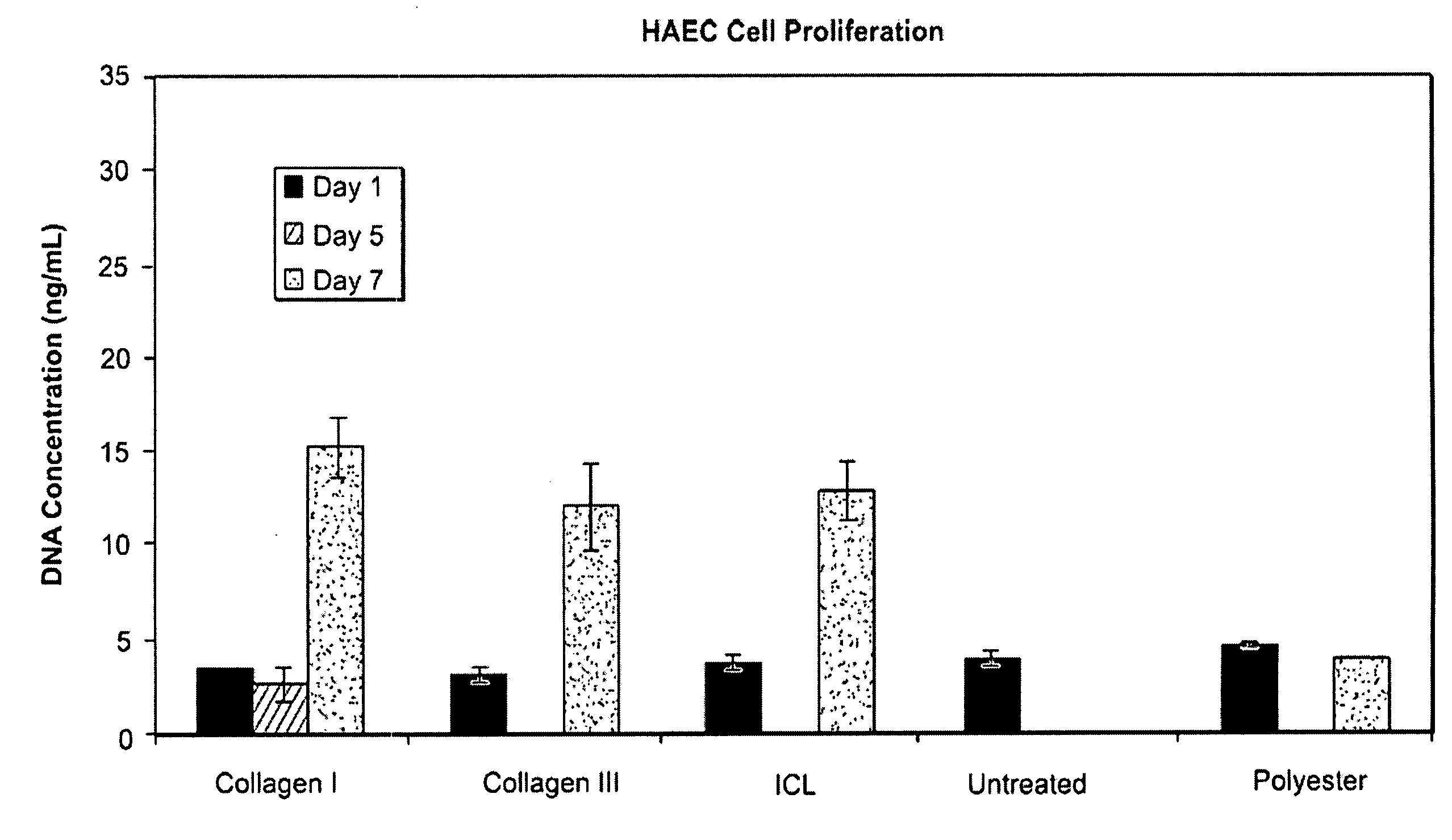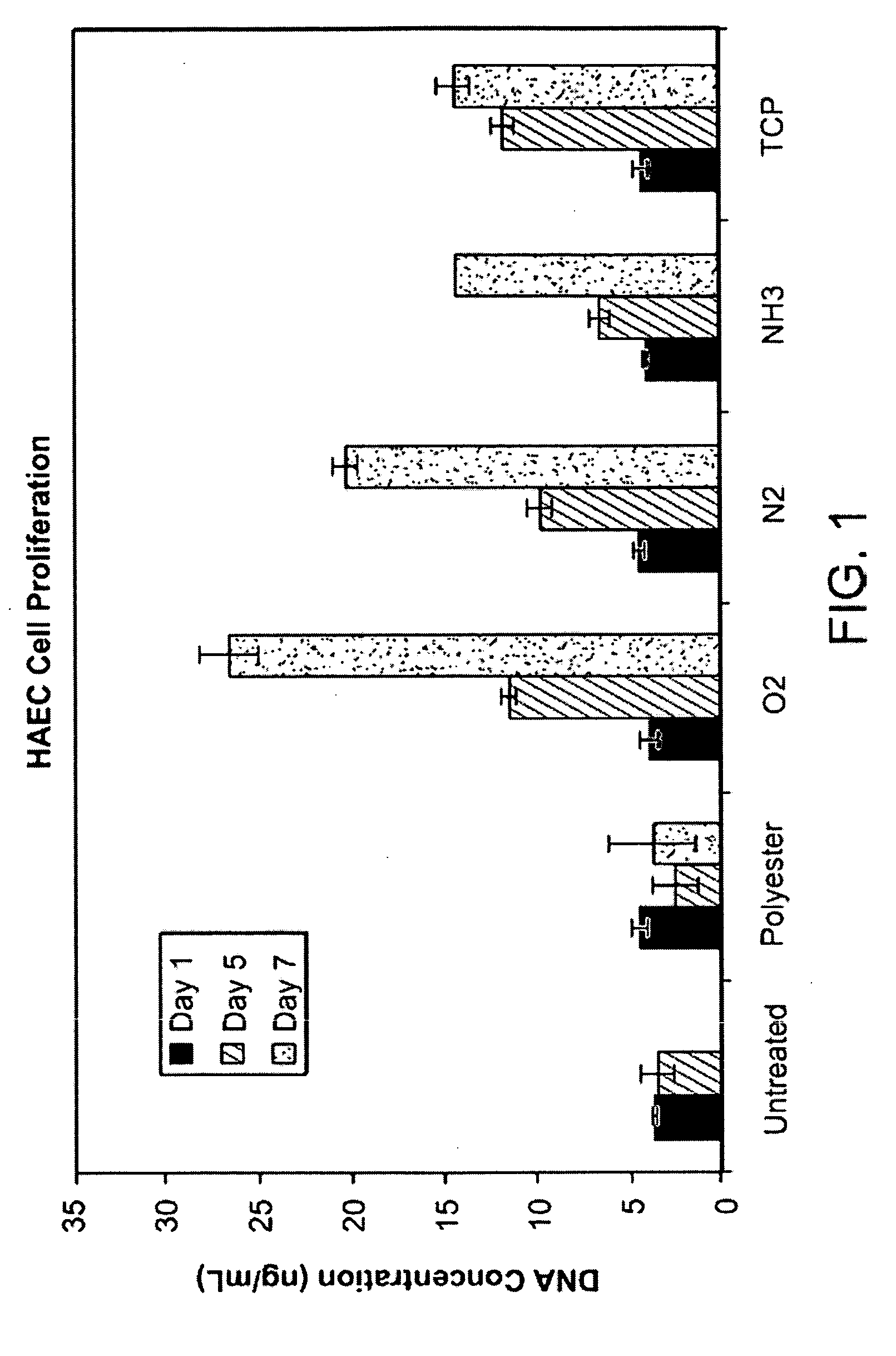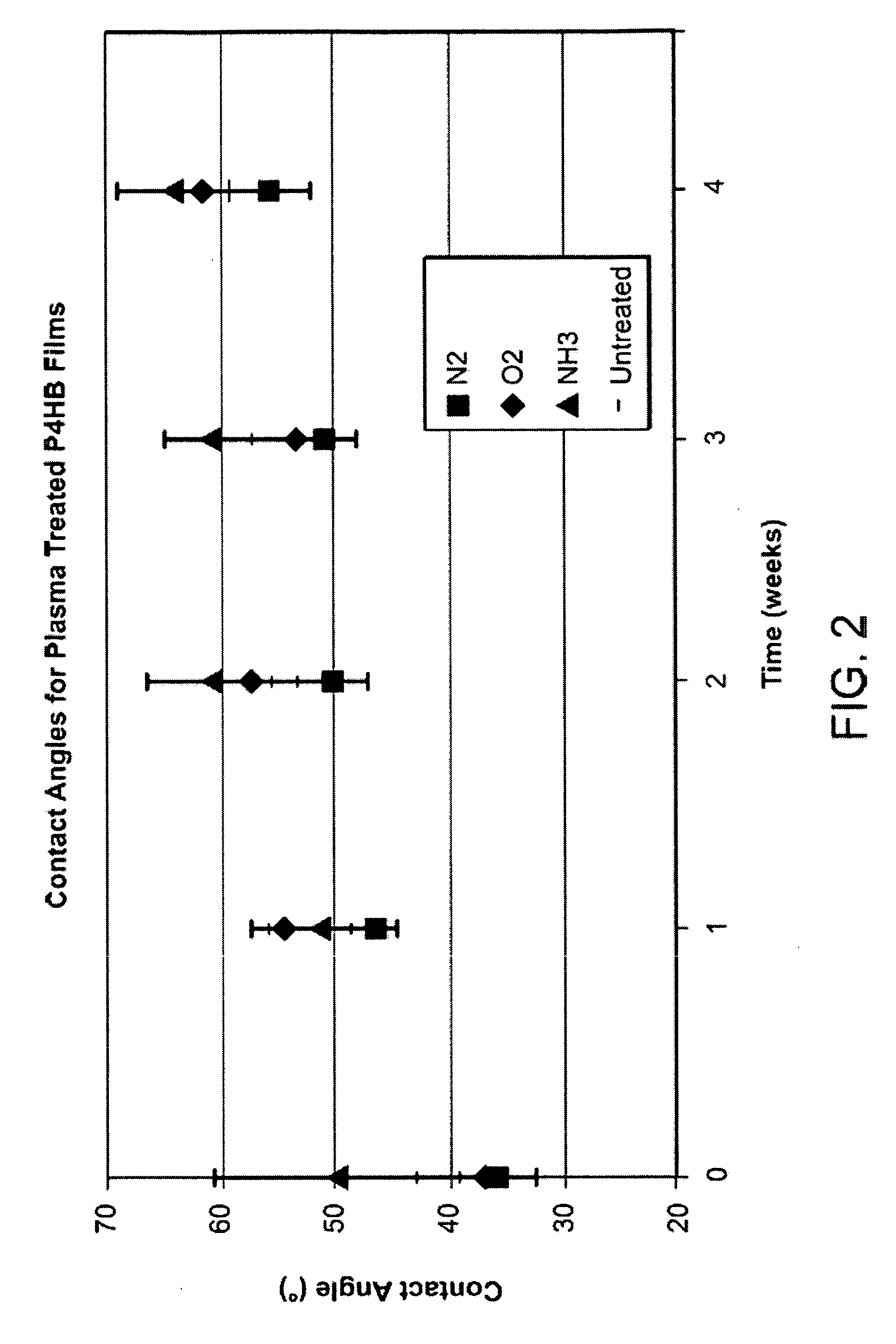Method for modifying a medical implant surface for promoting tissue growth
a technology of medical implants and tissue growth, applied in the field of modifying the surface of medical implants to promote tissue growth, can solve the problems of recurrent cerebrovascular events, increased risk of future pfo and paradoxical embolism patients, and potential adverse side effects, and achieves the effect of reducing the risk of thrombosis and avoiding excessive fibrosis
- Summary
- Abstract
- Description
- Claims
- Application Information
AI Technical Summary
Benefits of technology
Problems solved by technology
Method used
Image
Examples
example 1
Surface Modification Through Plasma Treatment
[0049] Plasma treating the surface of a septal occluder is one way to alter the surface characteristics of the material to promote protein deposition and cell attachment. Plasma treating the septal occluder increases the wetability of the implant surface, thereby improving endothelial cell attachment to the implant.
[0050] Plasma is partially ionized gas generated by applying an electrical field to a gas under at least partial vacuum. Plasma reacts and combines with first few atomic layers of the surface while the visual and bulk properties of the material remain unchanged. Gases such as oxygen and nitrogen have been used during plasma treatment, as well as gases containing amine groups.
[0051]FIG. 1 is a bar graph showing the effects in vitro of plasma treatment on proliferation of HAEC cells (human aortic endothelial cells) on an untreated polyester scaffold typically used in a septal occluder (“Polyester”), an untreated bioabsorbable ...
example 2
Stability of Plasma Treated Bioabsorbable Polymers
[0054] In order to determine the stability of plasma treated P4HB, molecular weight data of plasma treated solvent cast (porous cast) P4HB samples was taken at 4 days after plasma treatment and 5 weeks after plasma treatment.
[0055] Plasma treated samples were processed at PLASMAtech (Erlanger, Ky.). Samples of P4HB were plasma treated with oxygen gas (O2), nitrogen gas (N2), nitrous oxide (N2O), and a combination of ammonia gas (NH3) and oxygen gas (O2). The molecular weight data, shown in FIGS. 3A-B, indicates that the decrease in molecular weight on a percentage basis was least for the combination NH3 / O2 treated P4HB. Accordingly, the NH3 / O2 plasma treated P4HB has the greatest stability of the plasma treatments tested. According to the invention, the ratio of NH3 to O2 used to treat the P4HB is 2:3 in one embodiment, 1:1 in another embodiment, and 1:2 in yet another embodiment.
example 3
Surface Modification by Collagen Coating
[0056] Collagen can be made recombinantly in highly purified form, free of contamination from disease-causing pathogens such as viruses and prions. It is also available commercially (e.g., from FibroGen, Inc., South San Francisco, Calif., USA). Collagen type I and type III promote tissue growth, and can be applied to the surface of a medical implant through a simple dip coating process. For example, to coat a P4HB scaffold or frame with collagen according to the invention a 40 microgram / mL solution of collagen is made by combining 0.5 mL liquid collagen with 37.5 mL PBS. The scaffold or frame is then cleaned with ethyl alcohol and deionized water prior to being soaked in the collagen solution for 15 minutes. The scaffold or frame is dried for one hour between coats. Any number of coats of collagen may be applied. Four (4) coats of collagen are optimal according to one embodiment.
[0057] Attachment of HAEC cells to variously-treated scaffolds ...
PUM
| Property | Measurement | Unit |
|---|---|---|
| Bioabsorbable | aaaaa | aaaaa |
Abstract
Description
Claims
Application Information
 Login to View More
Login to View More - R&D
- Intellectual Property
- Life Sciences
- Materials
- Tech Scout
- Unparalleled Data Quality
- Higher Quality Content
- 60% Fewer Hallucinations
Browse by: Latest US Patents, China's latest patents, Technical Efficacy Thesaurus, Application Domain, Technology Topic, Popular Technical Reports.
© 2025 PatSnap. All rights reserved.Legal|Privacy policy|Modern Slavery Act Transparency Statement|Sitemap|About US| Contact US: help@patsnap.com



